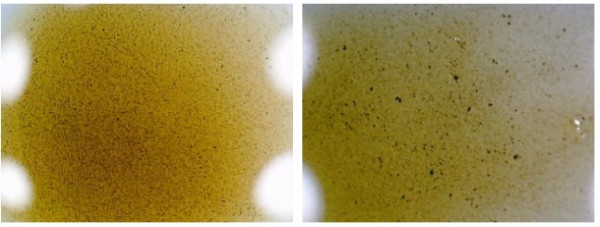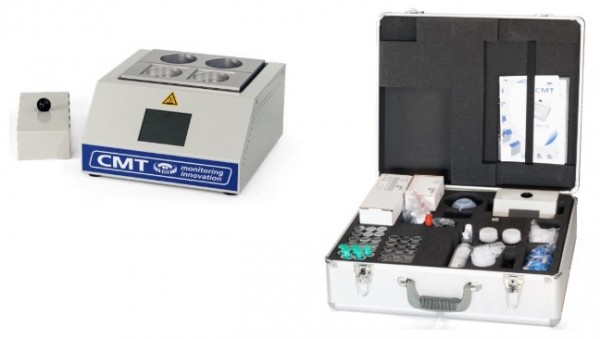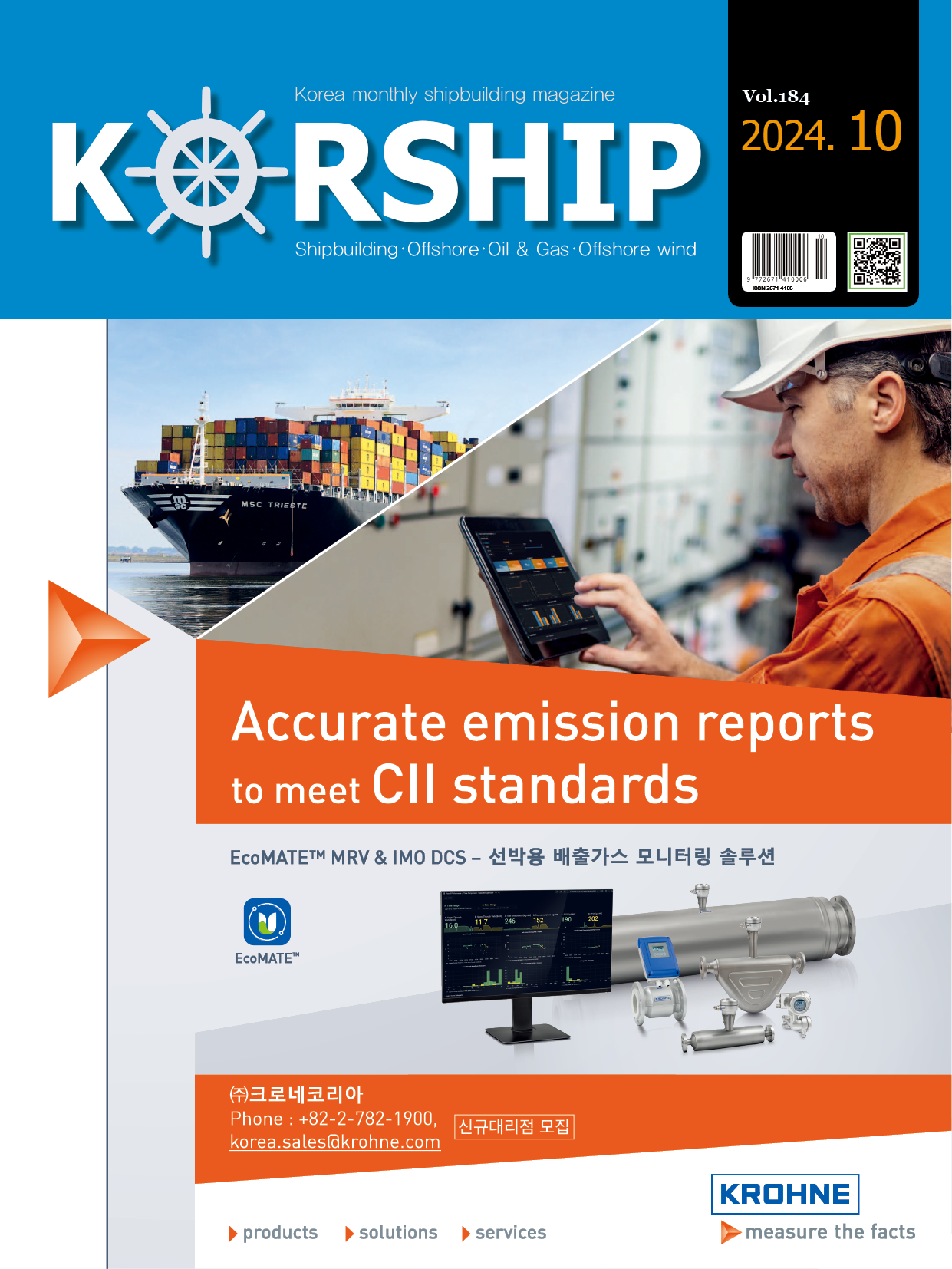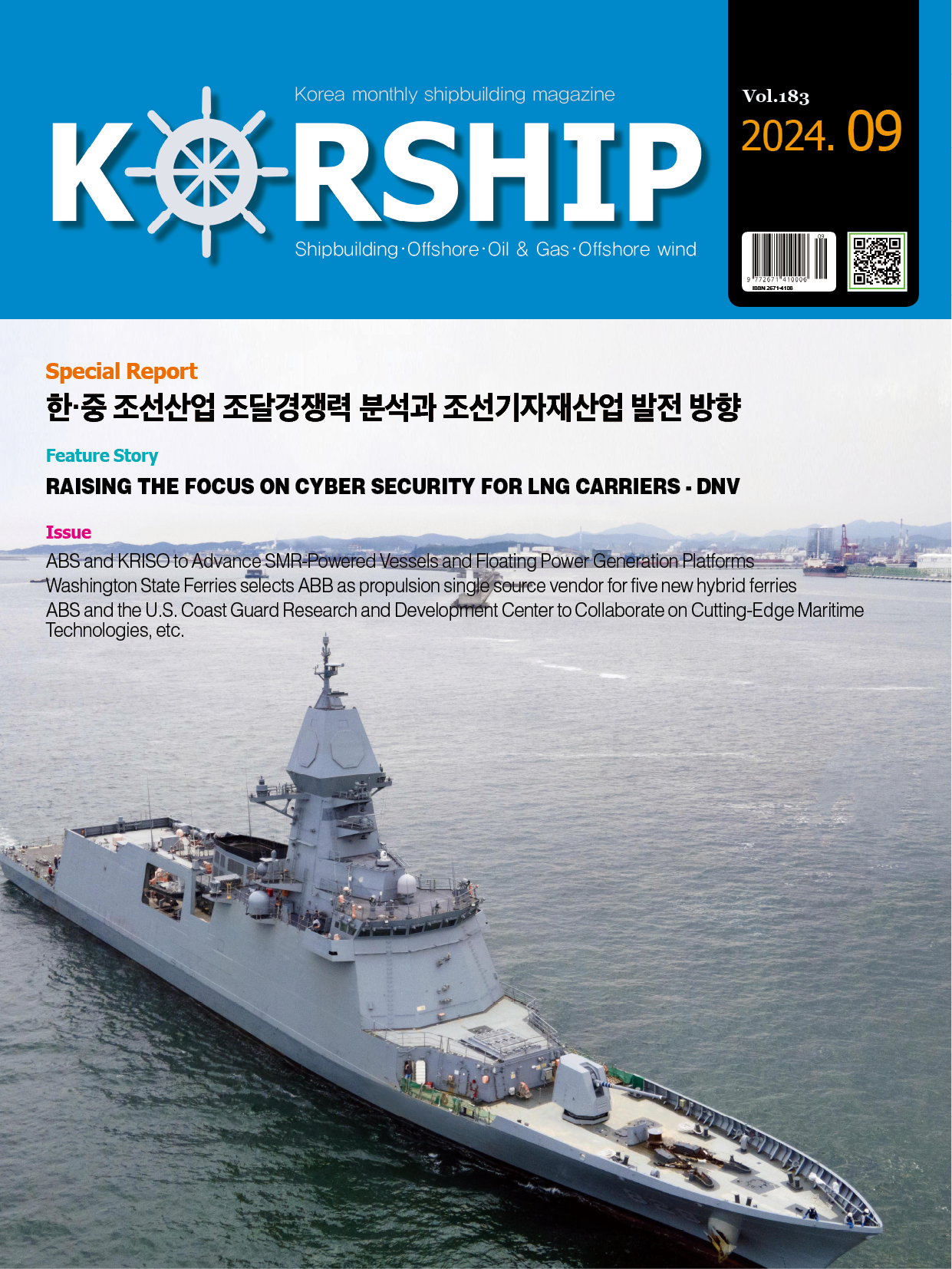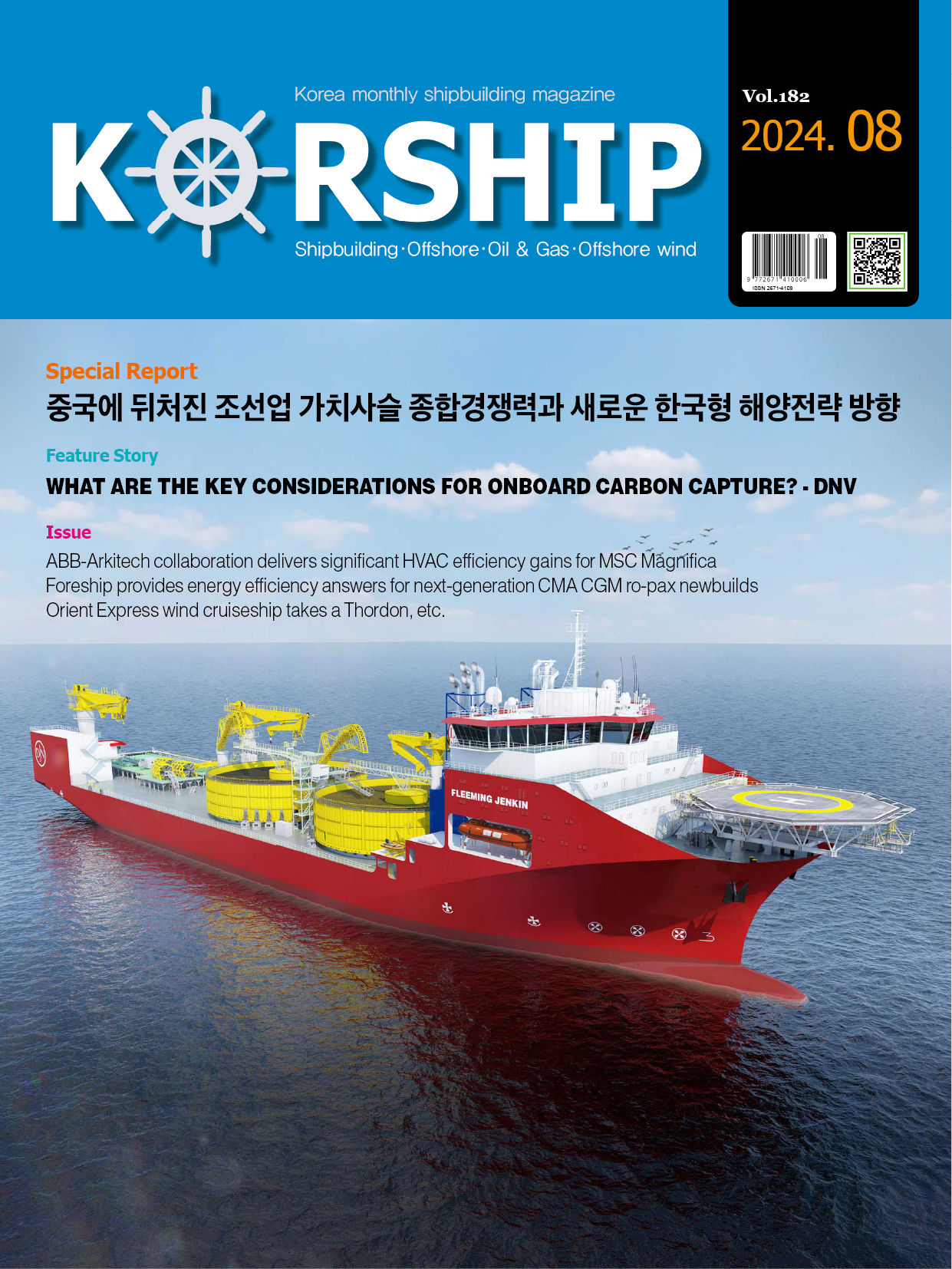New Product Fuel problems persist five years after IMO sulphur cap
페이지 정보
작성자 최고관리자 댓글 0건 조회 410회 작성일 24-11-28 19:24본문
Fuel problems persist five years after IMO sulphur cap
Cat fines in fuel samples following treatment in a purifier/separator (left) and from the fuel pump (right). Images taken using a digital microscope in parts per million.
As the fifth anniversary of the IMO 2020 Sulphur Cap approaches, fuel compatibility and viscosity problems continue to result in marine engine component damage and high cat fines.
“We expected fuel incompatibility problems and high levels of cat fines to diminish with the introduction of the IMO 2020 Sulphur Cap [MARPOL Annex VI] in January 2020. But despite new fuels and advanced engine technologies, problems persist. Cat fines remain a major problem for marine engine operators,” said Matthias Winkler, Managing Director of CM Technologies (CMT).
Catalytic fines are the byproduct of catalysts used in the fuel refining process. It is the accumulation of these very hard, abrasive aluminium and silicon particles that can severely damage cylinder liners, fuel injection valves, piston crowns and rings, potentially damaging the engine beyond repair.
Winkler said cat fines levels are exceeding ISO8217:2017 specifications in fuel being bunkered in some areas, including the ARA region. But more common is that accumulated cat fines in tank sediments are being dispersed back into the tank and engine during operations, particularly in rough seas.
With higher viscosity IFO 380cst or IFO 180cst fuels, cat fines tend to be suspended in the denser liquid and are removed more easily by fuel separators. Low sulphur fuels have an average viscosity of 105cst, though it can be as low as 10cst. And this is resulting in cat fines sinking to the settling tank, where they can often undetected.
“Engine builders recommend no more than 10ppm of cat fines in the fuel before it enters the engine, in reality, it is about 30ppm but sediment levels are much higher,” Winkler said.
While some ship operators are opting for additives that can improve Total Sediment Potential (TSP), sediment tests have shown samples significantly exceeding the maximum cat fines limit of 0.10%.
Historically, more frequent use of fuel separators was the best way of removing cat fines from HFO before the fuel enters the engine, but with LSF “cat fines content before the fuel oil separators and consequently before entering the engine is usually unknown,” said Winkler.
CMT also found that, since January 2020, more paraffinic blends are being used but there is incompatibility between an aromatic and a paraffinic fuel, which can lead to fuel degradation and instability.
Pictured below is CMT’s new Cat Fines Test Kit
David Fuhlbrügge, CMT’s Operations Manager, furthered: “Mixing two types of fuels increases the risk of incompatibility, particularly when mixing heavy fuel and low sulphur distillate fuels. This can result in clogged fuel filters, separators and fuel injection pumps, all of which can lead to loss of power or even shut down of the propulsion plant, putting the ship at risk.
CMT is also seeing increasing levels of asphaltene, another consequence of fuel blending, and which also results in increased sediment formation. And although the rate of sediment formation is not easily predicted (it changes with conditions such as temperature and storage time) it is resulting in an increase in fuel system blockages.
Aside from the manual removal of sludge from tanks, which is both time-consuming and costly, CMT advocates more frequent monitoring of the fuel for compatibility. “Our Electronic Compatibility Tester can save operators from the costly consequences of having an incompatible fuel mix in the tank,” said Fuhlbrügge.
Measuring the actual accumulated concentration of cat fines meanwhile has until now been largely impossible.
In a significant development for LSF users, CMT has introduced a test kit that allows crews to quickly and easily determine the cat fines content of fuel during and after bunkering, and before injection. The CMT Cat Fines II Test Kit not only helps protect the engine and its component parts against excessive wear, but it also helps verify the efficiency of the fuel treatment plant – separators, fuel filters and settling tanks.
Winkler said: “Engines running on low sulphur fuels are at an elevated risk of damage, but we can now measure cat fines and verify the quality, grade and compatibility of the fuel delivered, detecting potential fuel and engine problems before they happen.”
■ Contact: CMT https://cmtechnologies.de/en
- 이전글More than thirty percent of installed BWTS fail PSC inspections 24.11.28
- 다음글삼성重, 컨테이너선 4척 수주… 1조 985억원 규모 24.11.28

